
There are almost a million IT service providers in Europe – the backbone of digital transformation.
But in project business, everyone struggles with the same problems: deadlines get missed, budgets spiral out of control – and way too many projects just get cancelled altogether.
The truth: delivering IT projects reliably, profitably and efficiently is tough.
And the usual tools don’t make it any easier: instead of giving you the big picture, things like resource plans, time tracking, projects and finances all stay stuck in their silos. In the end, teams just make do with Excel sheets, endless emails and improvised workarounds.
And it’s not just IT system houses dealing with this – agencies, consultancies and other digital service providers know this situation all too well. Too many projects running at once, too little transparency, too many dependencies.
That’s exactly why we built the Project Delivery Platform Leadtime.
Leadtime is made for digital service companies who have to juggle a lot of projects at once. The platform is fully tailored to the needs of the European market – with GDPR compliance, EU standards and real digital sovereignty.
Our mission: taking the fear out of digital project business – and enabling service companies to build a deep, trusting, and long-term working relationship with their clients at eye level.
Instead of patching together lots of tools, teams and clients work in one seamless flow – no handovers, no gaps, no chaos.
With Leadtime, IT service providers deliver projects at least 50% faster and more profitably. Teams get way more done with the same resources.
And clients get what they expect: a professional delivery. On time. On budget. No drama.
Leadtime turns service quality into the strongest weapon. Because in the end, it holds true: Speed wins.
Digital service companies are often slowed down by their own structures . The business model is personnel-intensive – every new client relationship means more care, more support, more coordination. Especially in the enterprise sector, the B2B business is particularly consulting- and onboarding-intensive: Every new client automatically brings a complex onboarding project, individual customizations and constantly rising support load with them.
This is exactly where the conflict of objectives comes in: Sales wants to grow, but the implementation teams can't scale at will. Every new deal instantly ties up capacity, while the revenue doesn't come in until months later. On top of that, there are long sales cycles of 6–18 months – a period in which resource planning becomes a guessing game.
And IT projects are hard to plan by nature. Customers expect fixed deadlines, but in practice, spontaneous support requests, context switching and bottlenecks with specialists keep causing disruptions. If deadlines are missed, it hits double: On the one hand, the customer relationship suffers, and on the other, the project team blocks following orders, whose start gets delayed.
This is how a self-reinforcing bottleneck comes about. It’s not demand that’s the problem – it’s the throughput capability of the organization. Companies hold back their own growth because they can’t onboard new customers fast enough. Internal delivery structures are overloaded, unreliable, and not scalable. Project delays are just the most obvious symptom.
The root cause runs deeper: A lot of companies missed the chance to systematically develop their delivery structures during the growth phase. Processes, roles, and capacity management grew organically – often chaotically, rarely resilient. Specialists are in high demand, expensive, and needed everywhere at the same time: in onboarding, support, and maintenance. Technical debt from product development makes things even worse. With every new customer, the system gets more sluggish – until sooner or later it becomes the bottleneck for its own growth.

A lot of companies try to patch up their bottlenecks with a gradually created collection of single-purpose tools — Excel for numbers, Notion for docs, Asana for tasks, Slack to communicate. The idea: Somehow keep an overview.
But in practice, that doesn’t create a seamless process flow. Information gets lost in between, lots needs to be manually transferred or updated twice. There’s just not a scalable system that can keep up with growth.
A typical example: To plan a project realistically, you'd need to bring together the requirements with the attendance data of the team members and their workload from other projects. But exactly this kind of information is scattered across different tools – and that means there's no basis for solid decisions. Managers are basically flying blind, because there's no central data view.
Over time, the tool landscape grows out of control. Each team member works with their own preferences, information breaks apart into chats, to-do lists and tables. The tools aren't systematically integrated, but are kind of improvised “linked” – often via copy & paste or manual double entry. Instead of relief, you just end up with even more coordination efforts: nobody knows anymore where any information actually is.
Things get especially dicey in more complex projects. That's where silos and breaks cause knowledge loss and double work. What’s missing is a reliable Single Source of Truth. That’s exactly why traditional tools fail to solve the structural problems in the project business – they just move around the symptoms, but they don’t fix the cause.

And that’s exactly why we created Leadtime – a holistic work system for companies in the digital project business. Instead of scattered tools and chaotic workarounds, Leadtime offers a seamless flow, where sales, projects, resources, and finance finally work together.
We specifically tackled the hurdles that make digital projects so tough:
Project start in minutes instead of days – new projects can be set up up to 80% faster with templates.
Quotes & contracts at the push of a button – consistent, error-free and up to 70% shorter to create.
No handovers, no breaks – planning and execution run smoothly in one flow, saving up to 5 hours of coordination per week and project.
Transparent resource planning – always see availability and capacity, overloads drop by up to 40%.
Real customer involvement – fewer follow-up questions, up to 50% fewer status meetings, happier customers.
Clean approvals – structured tests and handovers cut rework by 30–40%.
Efficient support – tickets get solved on average 60% faster thanks to AI support and reusable templates.
Automated invoicing – invoices are created in seconds not hours, saving up to 90% manual effort.
Clarity on profitability – margins and capacity are visible in real time, management can jump in instantly.
The result: Leadtime makes digital project business faster, more profitable, and as standardized as never before.
The term Leadtime actually comes from industrial manufacturing and describes the time span between receipt of order and delivery. That's exactly the promise we deliver: we shorten this time radically – and at the same time make it plannable.
The name also stands for the holistic approach: Leadtime maps the entire customer lifecycle – from sales through onboarding all the way to support and customer success management. The platform replaces tons of individual solutions like time tracking, HR management, task and project management and becomes a real business operating system for digital service providers.
Leadtime covers the entire digital project business – from sales through project management all the way to billing and analysis. To help you get around quickly, the features are organized into areas. Each area has its own chapter in this knowledge base with articles that walk you through, step by step, how to get the most out of Leadtime.
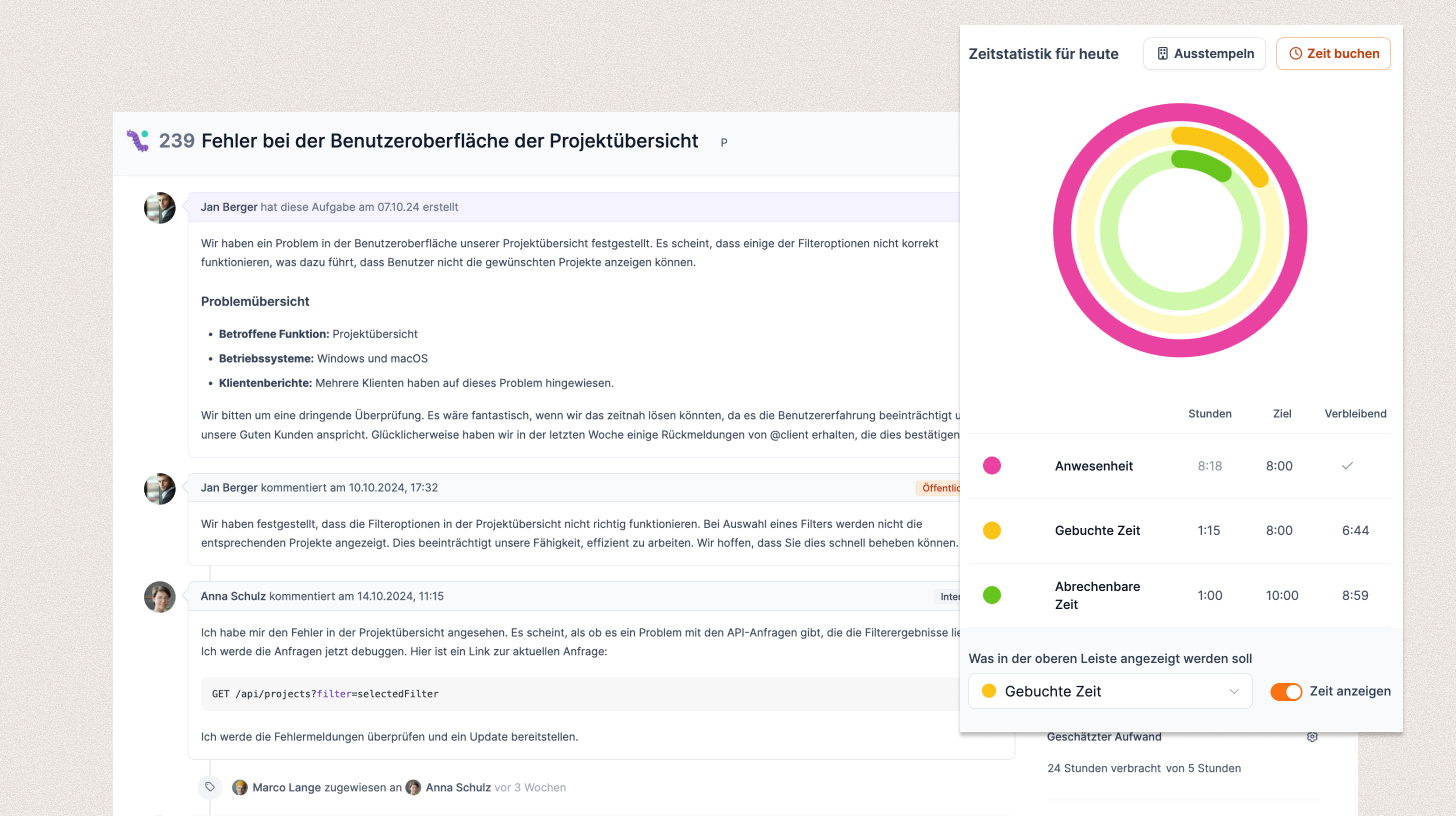
Some features in Leadtime aren't tied to a specific area—they're available on every page. This includes the time tracking, so you can log work hours right on tasks or tickets. Also, there's the notification system, which keeps you updated on important events, and the built-in ticket system for support cases. Plus, there's the console, which gives you access to central commands.
Interface and cross-functional features
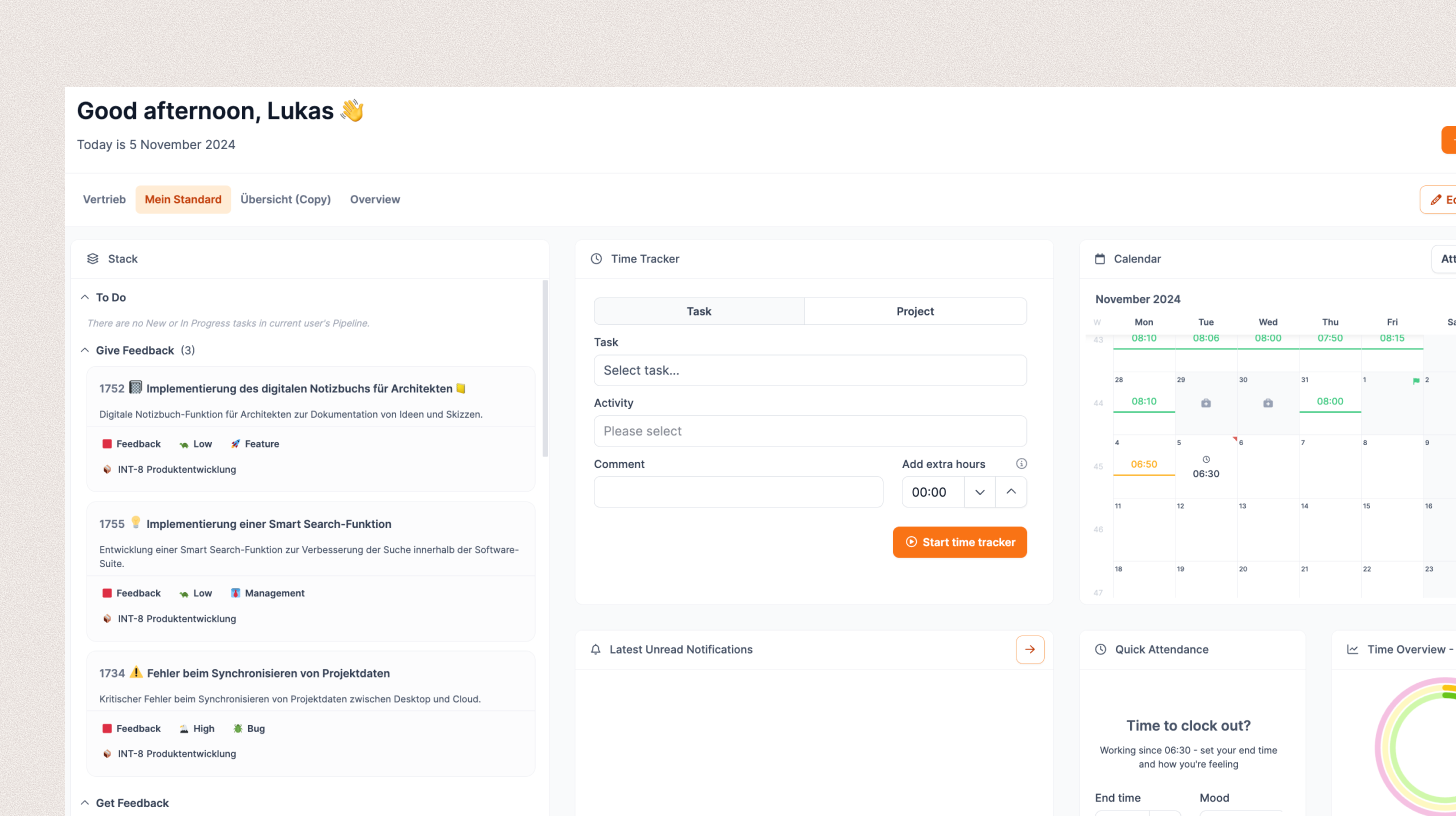
The dashboard is Leadtime’s homepage. It gives you a quick overview of your open tasks, projects, appointments, and key figures. The cool part: you can customize it just how you want. Lists, tools, charts, or project views—you can mix and arrange them however you like. That way, your workspace really shows the info you need most in your daily workflow.
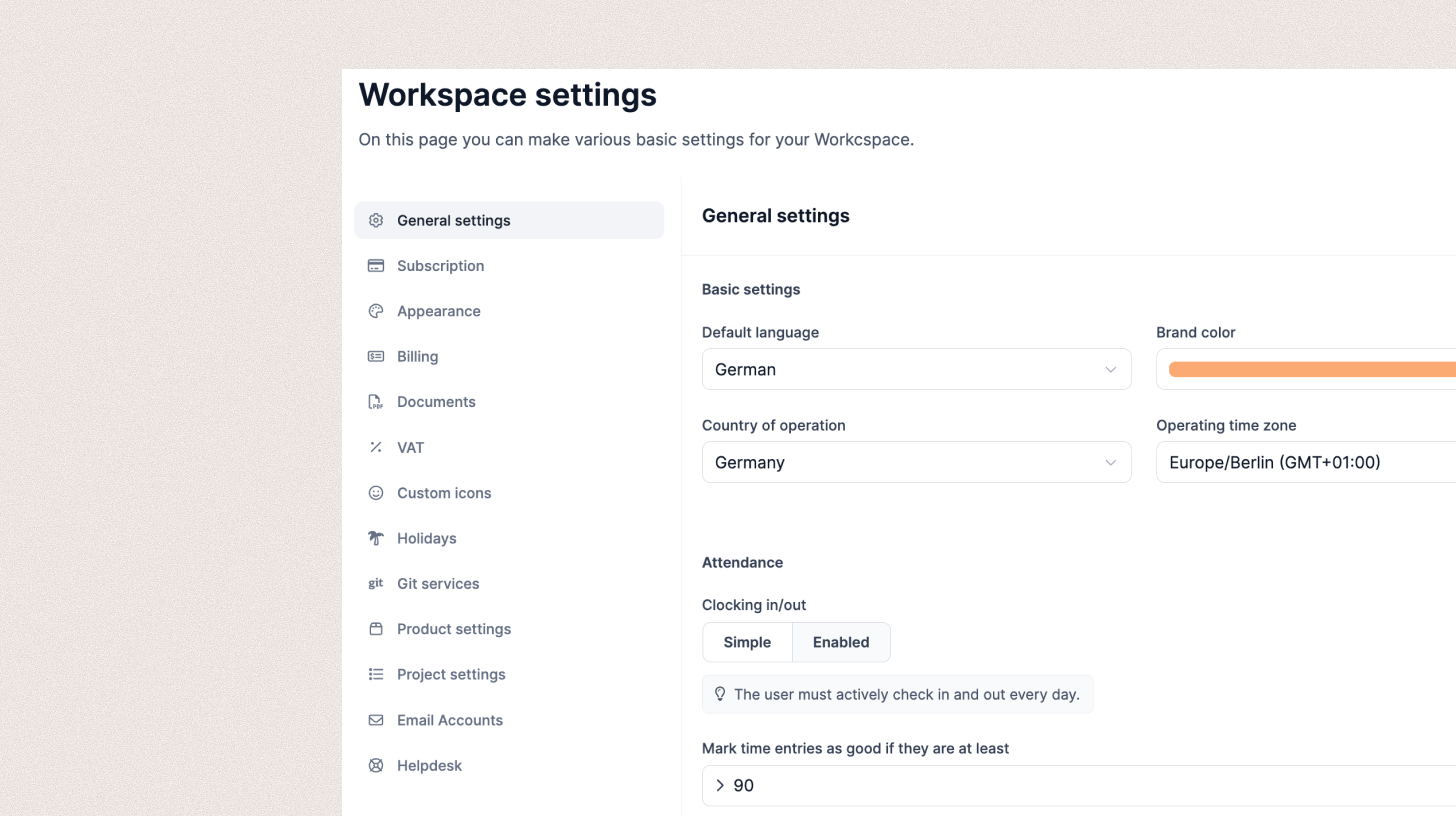
In the Administration area, you're in control of all workspace-wide settings. That includes the roles and permissions system, which lets you regulate access, as well as the customizing of the look and feel. You can also set up the ticket system, manage your subscription and use the importer to smoothly bring data from external systems right into Leadtime.
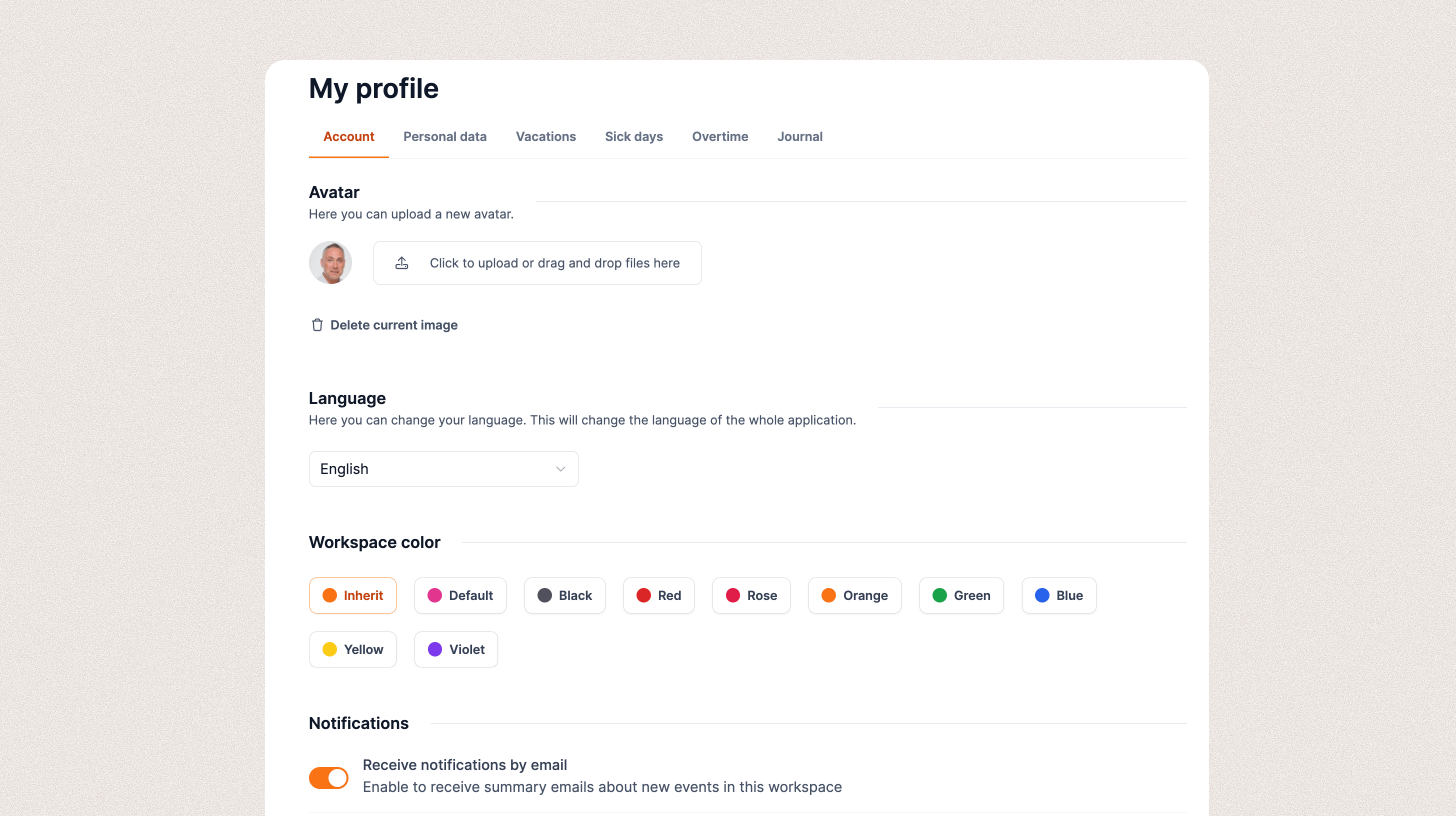
In the Profile section, you handle your personal workspace. Here, you can adjust the color scheme, upload your avatar, and take care of your personal data. You can also log vacations, sick days, and overtime, and use your employee journal to share notes or observations with your managers. That way, you'll always have full control over your individual settings and work info.
Check out your profile
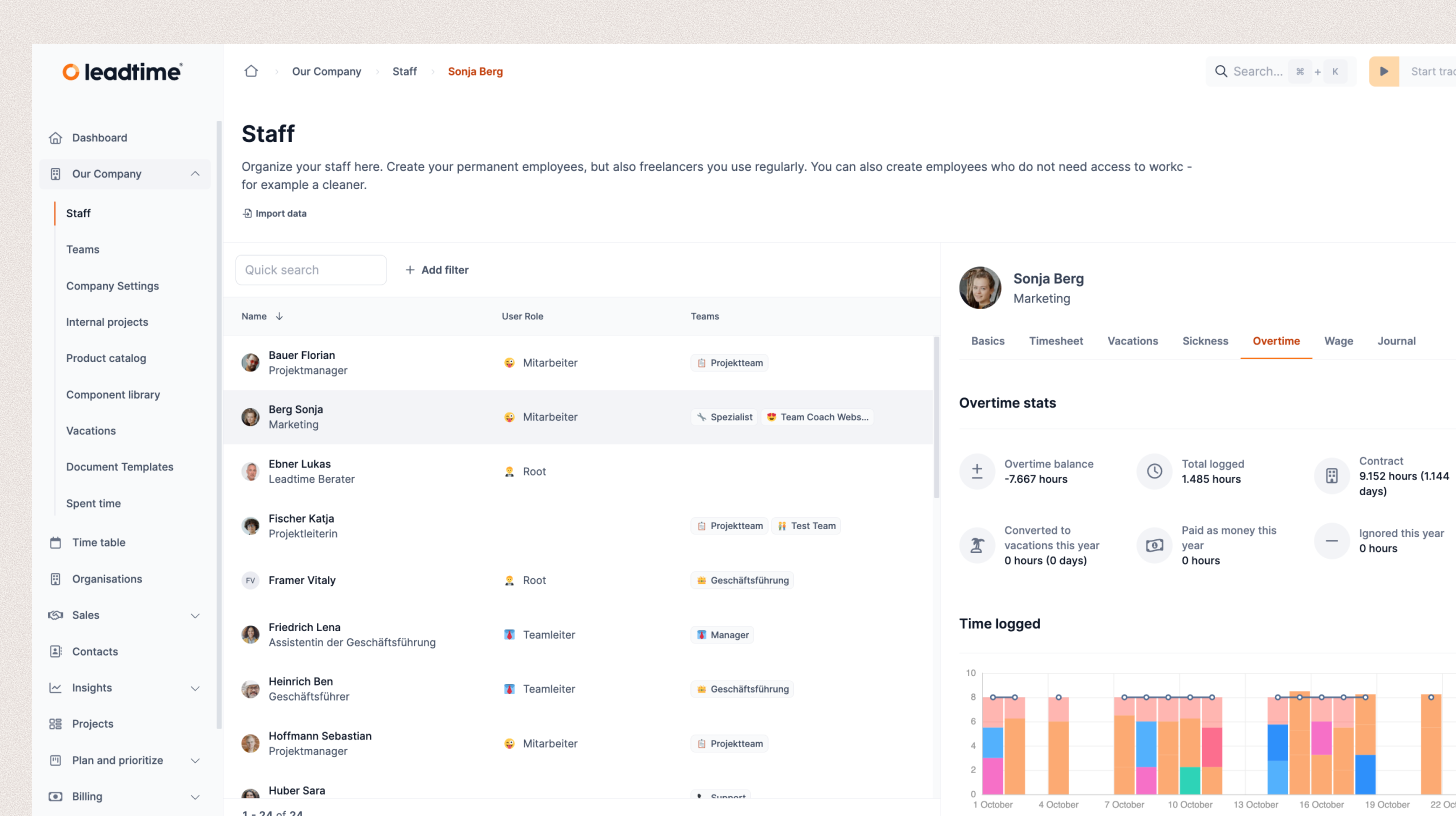
In the Your company section, you take care of all your organization's internal structures and activities. Here, you create employees and teams, manage internal projects, maintain your product catalog, and handle project elements. You can also take care of time off and absences for your team as well as set up central company settings. All of this makes this area the foundation for daily work across your entire workspace.
Go to Your company

The team calendar gives you a central overview of all team members' time bookings. In the time tracking view, you see booked times on tasks and tickets in detail, no matter what the pure attendance time is. That way you can spot gaps in tracking quickly and give feedback. Leaders always have a clear picture of attendance, working hours, and team performance — and can optimize as needed.
Here's the team calendar
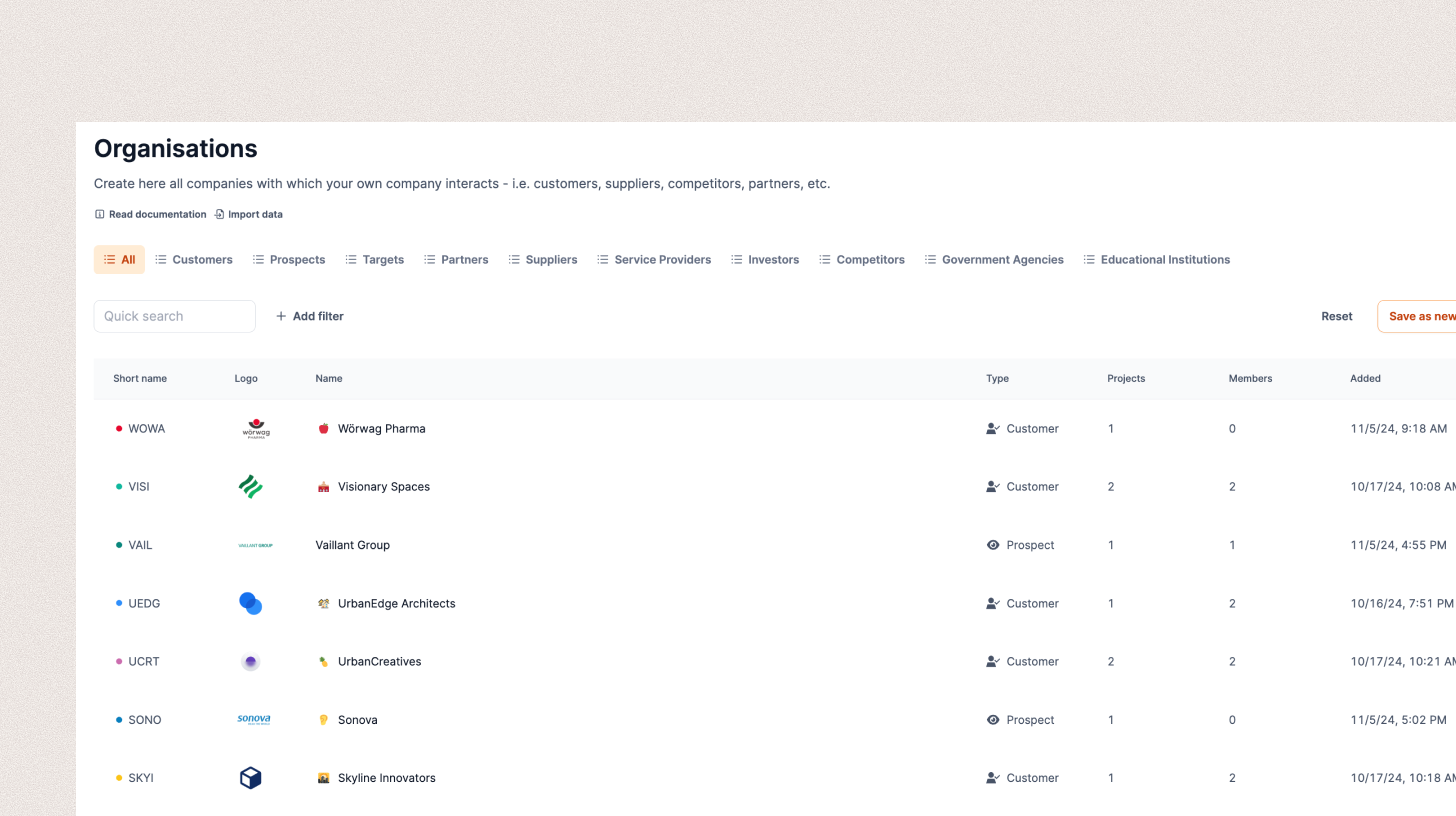
In the Organizations section, you manage all business partners your company interacts with. This mainly includes customers and leads, but also suppliers or even competitors. Every external organization acts as the entry point for external projects, since these always get linked to an organization — like when working for a customer. That way, all your relationships and projects stay clearly structured and easy to track anytime.
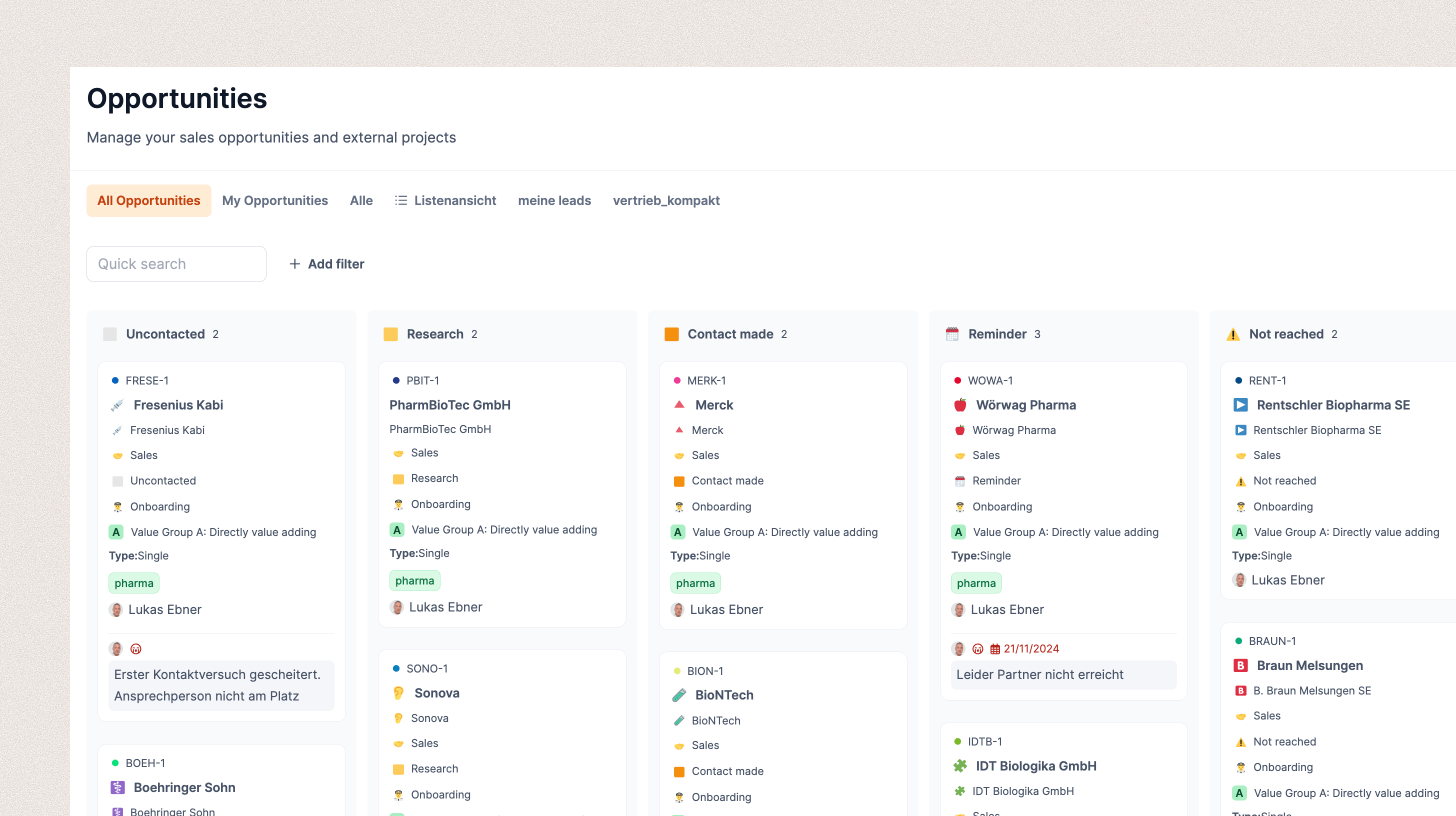
The Sales section covers Leadtime's built-in acquisition CRM. Here you manage sales opportunities, document contacts, and use templates to make your work easier. With the Kanban board, you always have an overview of every opportunity’s status. You’ll also see all currently open quotes, so you can realistically estimate your revenue potential. So, Sales is the basis for a clear pipeline and revenue plan.
Check out Sales

The Address Book gives you a cross-organization overview of everyone connected to your company – internal staff as well as external contacts for customers, partners, or suppliers. It's not made for managing data, but to make sure that all relevant contacts can be viewed in one place. With CardDAV sync you can also sync the info with your OS address books so everyone on your team always has the latest data.
Here's the Address Book
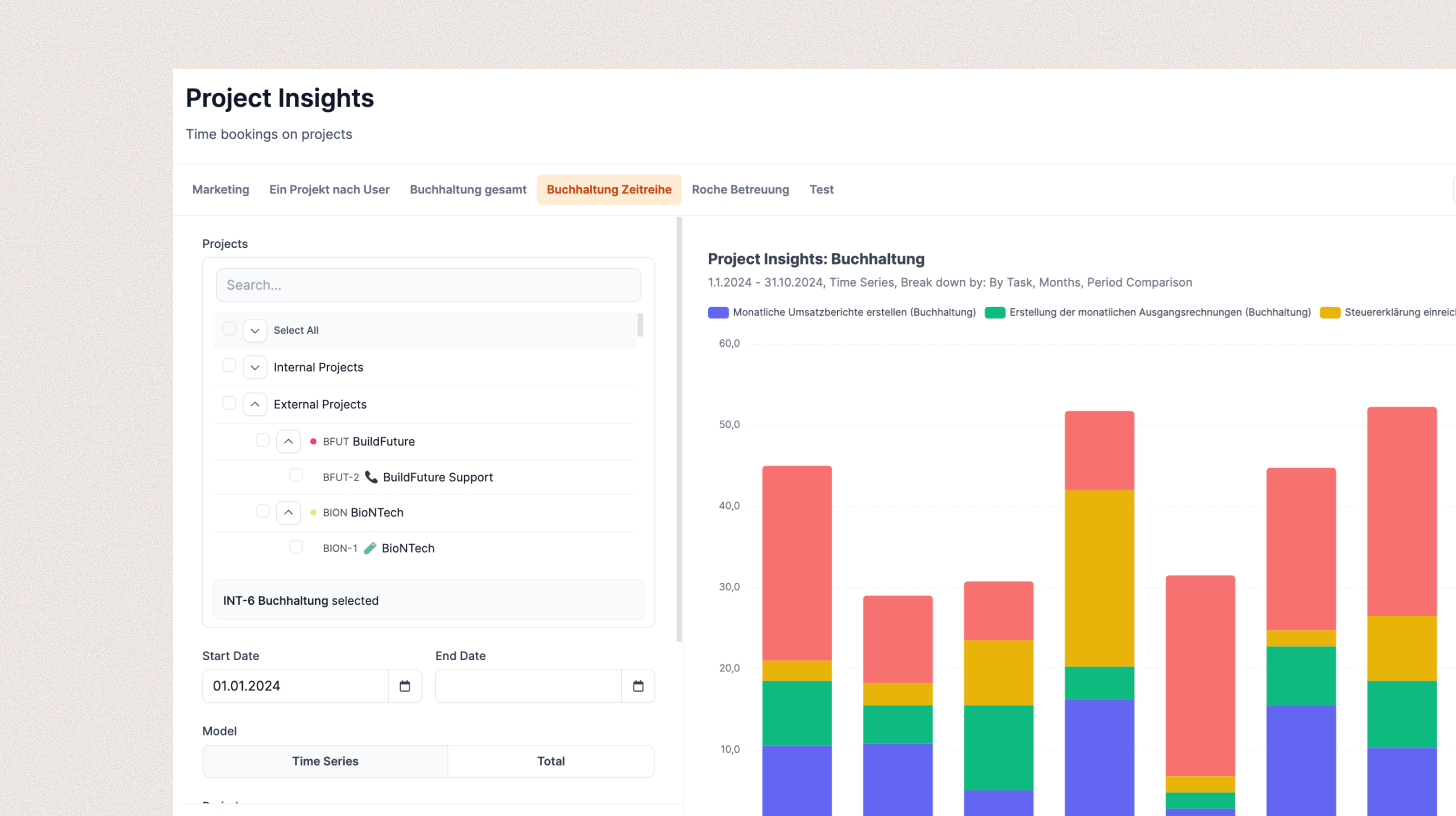
Leadtime Insights is the analytics module of the app. It brings together all your project, staffing, utilization, and revenue data and shows it to you in charts. You can pick the time range, style, and how much detail you want, save your own views, and add them to your dashboard. Insights lets you dig deep – from time series up to revenue forecasts.
Go to Insights
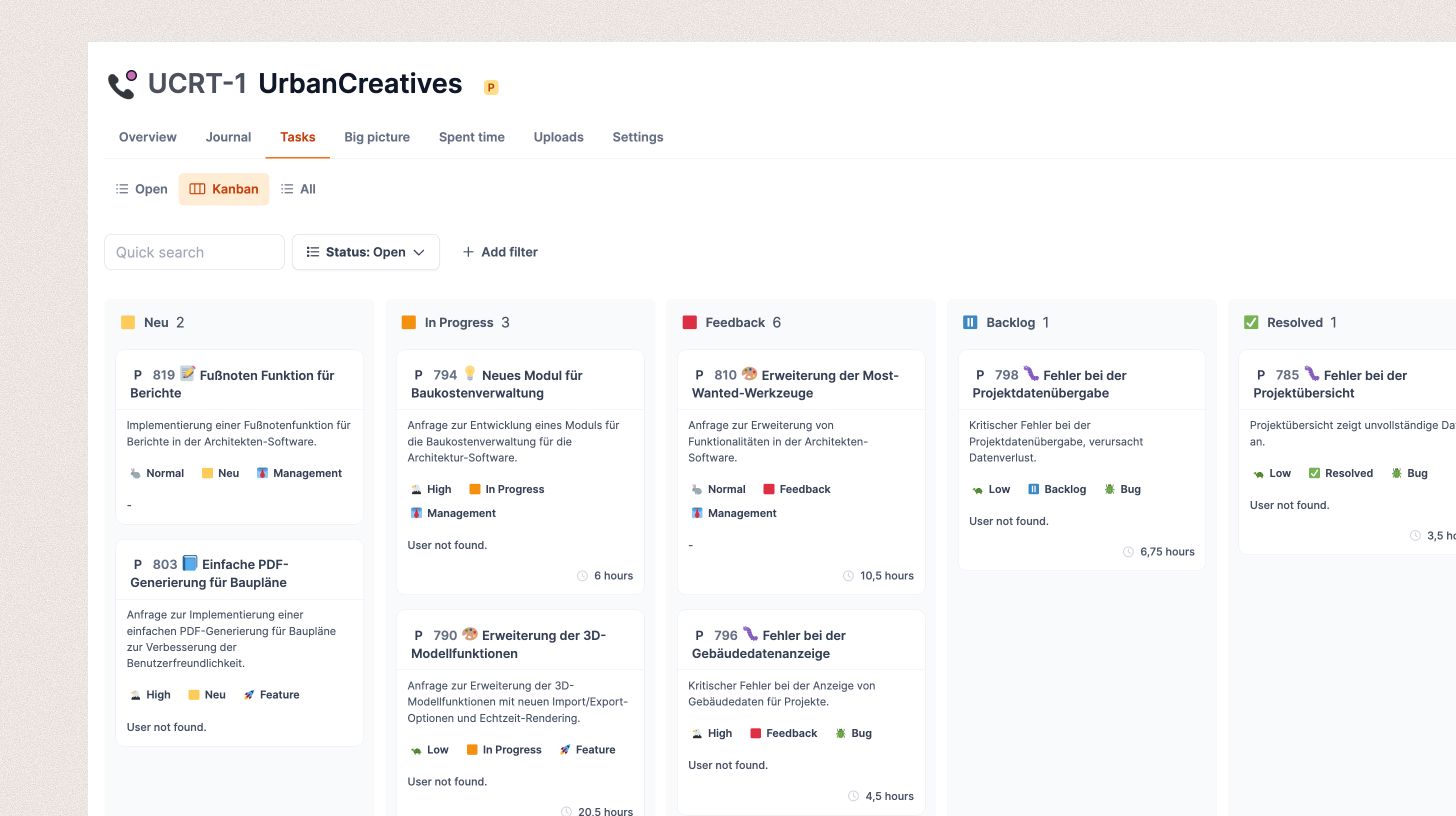
In the Projects section, all your company's initiatives are managed. Leadtime distinguishes between internal projects, which the organization sets for itself, and external projects, which are commissioned by customers. There are also ongoing projects with recurring tasks, like support, where billing happens in intervals. But the real strength is in completed projects, which are planned, offered, and executed up to a clear deadline.

In the Planning section, it's all about setting priorities across projects, managing capacities and reaching the highest possible throughput. Four tools are available for that: Big Picture, Pools, Pipelines and Stacks. They visualize workloads, show dependencies, and help you make decisions not just on a project level, but for the entire organization. That way, the balance between availability, need, and focus is maintained.
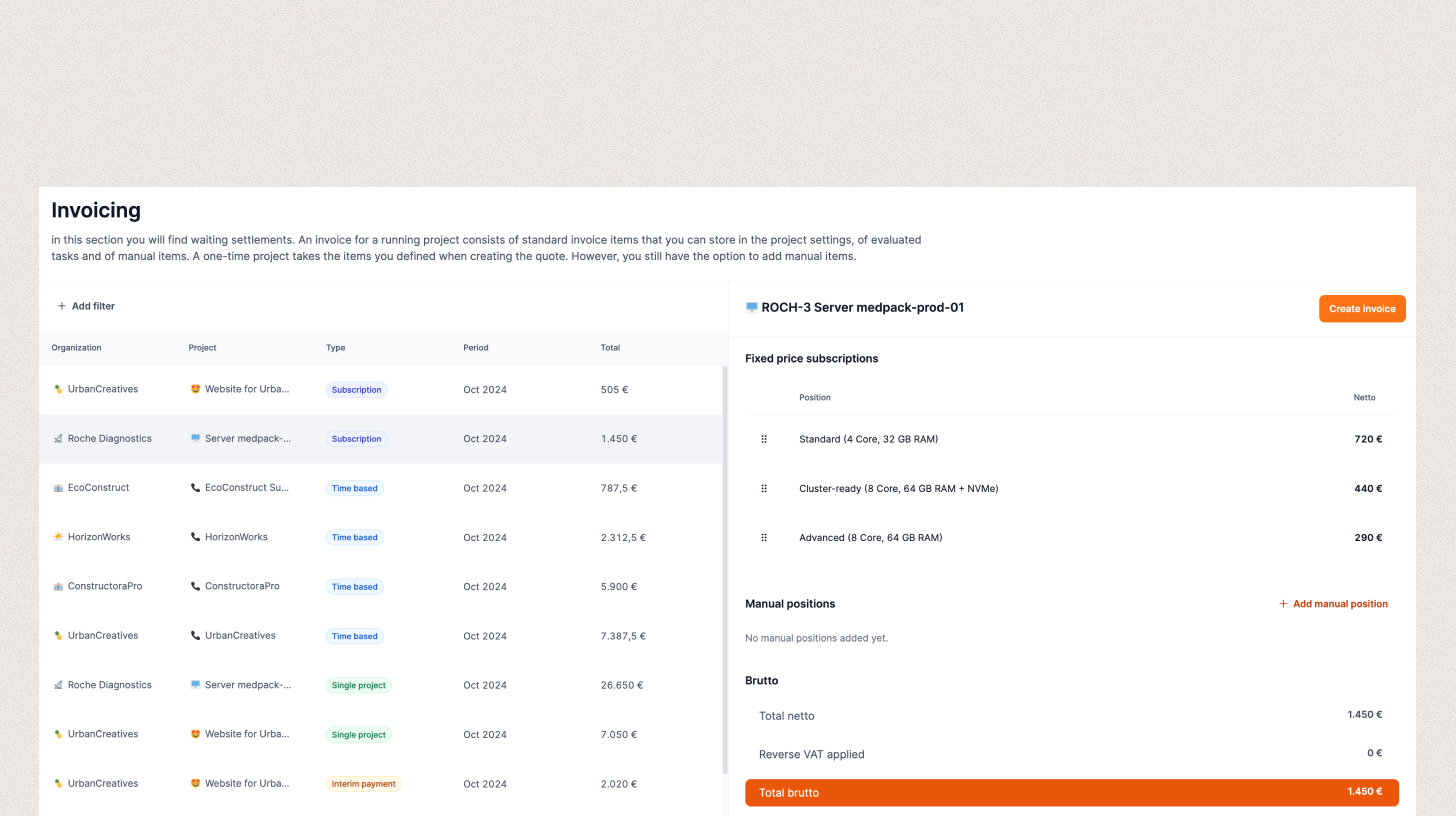
In a lot of service businesses, invoicing is error-prone and tedious – often outsourced or managed manually in spreadsheets. In Leadtime, billing is fully integrated: projects, working hours, retainers, subscriptions, or products can be invoiced directly. Invoices are created from the logged services, with no double work. This boosts liquidity, predictability, and the financial stability of your company.